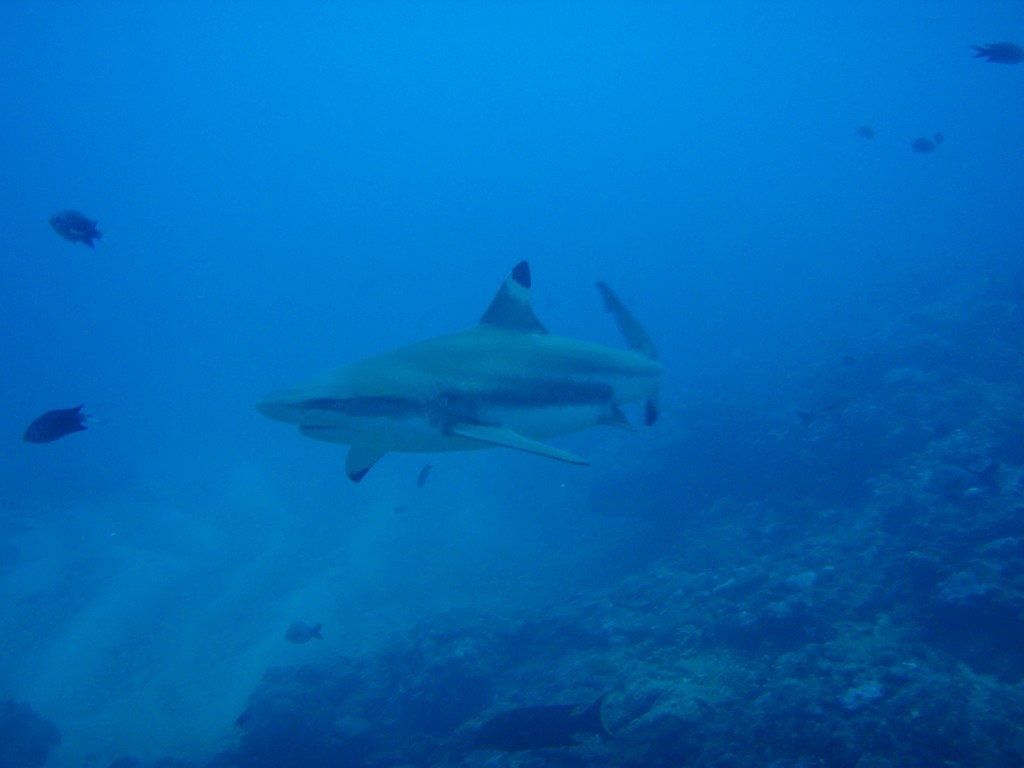by Shanta Barley, Field Scientist, Madagascar
What constitutes a duvet day for a Vezo shark fisherman? Not the threat of capsizing in seven metre waves, it turns out. Yesterday, Andava bay was peppered with pirogues en route to the Mozambique Channel – exactly where a powerful, dangerous cyclone called Funso is currently fuming. Ten kilometres out to sea, the fishermen will unravel and sink 200 metre long nets, anchoring them with heavy weights to keep them stable in the powerful currents. When the fishermen haul the nets in, there’s a distinct possibility that their pirogues will capsize and they will drown. “Rozy mivaka,” explains Thomas, an ex-shark fisherman who is now heads up Blue Ventures’ shark fishery monitoring project – “they’re terrified.”
So why do they do it? Surprisingly, it’s because the Vezo believe sharks are easier to catch during violent storms, explains Thomas. One hypothesis is that blinded by turbidity, hammerheads and guitarfish fail to see the net before it’s too late, and become hopelessly entangled. Tuna and other large pelagic species of fish are also more likely to be trapped in the nets when visibility is poor, and the smell of their blood attracts sharks (Sharks are incredibly sensitive to the smell of blood: it is said that they can detect the equivalent of one teaspoonful in an Olympic sized swimming pool).

Could sharks such as this (blacktip reef shark) be just a memory soon in Madagascar?
Despite the dangers of shark fishing in a cyclone, it certainly pays off: shark fins fetch up to $50 per kilogram, a seventh of the annual income of fishermen in these parts. Ratsimba, a fisherman from Andavadoaka, has caught seven sharks this week. “One for every day,” he jokes. Yet the plight of sharks in Madagascar is no laughing matter: exports of shark fin plummeted from almost 50 metric tons in 1992 to around 15 metric tons in 2003 — and according to Blue Ventures’ own research, over 1300 sharks were caught along a 50 km stretch of coast in Velondriake between 2006 and 2007.
Such overfishing of sharks can have unpredictable and catastrophic impacts on marine ecosystems. Sharks consume rays, skates and smaller sharks, and when their populations crash, the abundance of their prey rockets. A study published in Science in 2007 found that a decline in the abundance of eleven species of shark in the coastal, northwest Atlantic led to an explosion of cownose rays, which feed on scallops. As a result of the explosion, a century-old scallop industry in the region died out (Ransom A. Myers, et al., 2007, Science 315, 1846).

Fishermen rely on catching sharks like this hammerhead as a large of their income
The good news is that marine reserves can reverse the decline, while providing economic benefits to local fishing communities. A protected area in Mexico that is no bigger than Manhattan, and was established in 1995, saw a tenfold increase in shark biomass between 1999 and 2009 (Galland, G. et al., 2011, Coral Reefs 30, 215). Despite just 35 per cent of the reserve being ‘no take,’ very little fishing takes place because many locals have realised that working as an eco-tourism guide is far more lucrative than fishing.
If such a small reserve can have such a large impact on shark abundance, then imagine what Velondriake could accomplish…

